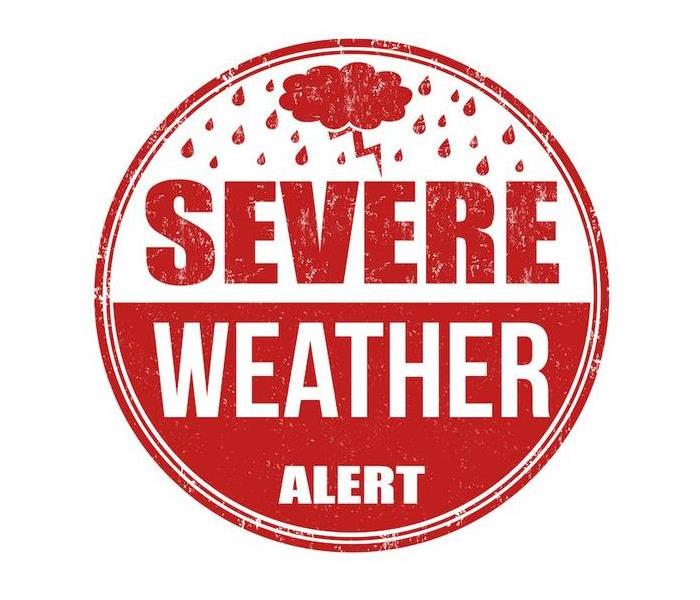Stay Safe During Storms by Understanding Alerts
7/12/2022 (Permalink)
There are 42 different kinds of weather alerts broken into seven different categories. When severe weather is rolling in and you want to keep your family safe, that is a lot of information to try and digest.
Understanding what an alert means allows you to get to safety quickly. It also means that you can take preemptive steps before the storm to protect your home.
Having a general knowledge of all kinds of weather is helpful, but it is essential to understand our most common severe weather and the alerts that go along with it right here in New York.
How Alerts Are Issued
Where do weather alerts come from? How are forecasts formed, and when they are, how is a storm tracked for its timing, strength, and location? There are a couple of ways to answer these questions.
The National Weather Service is the entity that is responsible for creating weather forecasts and subsequently issuing any necessary warnings. There are six regional weather offices and more than 100 forecasting offices all around the nation, which means when we receive a forecast it is not only accurate but localized.
NWS personnel and meteorologists use several different kinds of data in order to create a forecast, including satellite radar, seismic activity, solar activity, and sensors. The kind of data that is accessed varies according to the type of weather moving in, but the end result is always to provide an accurate and dependable forecast.
The Most Important Alerts to Understand
“Watch” and “warning” are two words that will be used in almost every weather situation and something that everyone should understand the difference between. These alerts will be issued with winter storms, floods, and thunderstorms to name just a few examples.
A watch is issued when it is time to prepare for a serious storm to move in. Watches are issued for a large area in order to keep most people safe before the danger starts.
When a warning is issued, it will cover a more pinpointed, smaller area, like a city or county. A warning means that a severe storm is in the immediate area and you should seek shelter right away in order to protect your life and home.
Beyond understanding watches and warnings, it is essential to understand the weather that most often affects us right here in Dutchess County. While we typically have mild temperatures in the summer, it certainly doesn’t rule out the risk of severe thunderstorms, tornadoes, and strong winds.
In the winter, we can see close to 45 inches of snow, which means we should make sure we understand how to respond to winter storm alerts, ice warnings, and freezing temperatures.
Protecting Your Home During a Storm
Having a good knowledge of the different weather alerts that affect us is the first way to protect your home and your life during a weather event, but there are a few other things you can do as well.
Keep your gutters clean and secure your outdoor furniture ahead of storms to prevent flood and wind damage. Prepare a safe space in your home with supplies for each family member to comfortably shelter during a storm. Plan and practice an exit route for those times that you cannot safely stay in your home.
After the storm, assess your property for damage. Take pictures to document the damage and call SERVPRO. We are available 24⁄7 to start your recovery process quickly and restore your home.
Learn as much as you can about our community’s weather so that you can stay safe no matter what comes our way. Be prepared for the next round of alerts and ride out the storm with ease.
Experienced storm damage to your home or property? Contact us today for a quick response!






 24/7 Emergency Service
24/7 Emergency Service